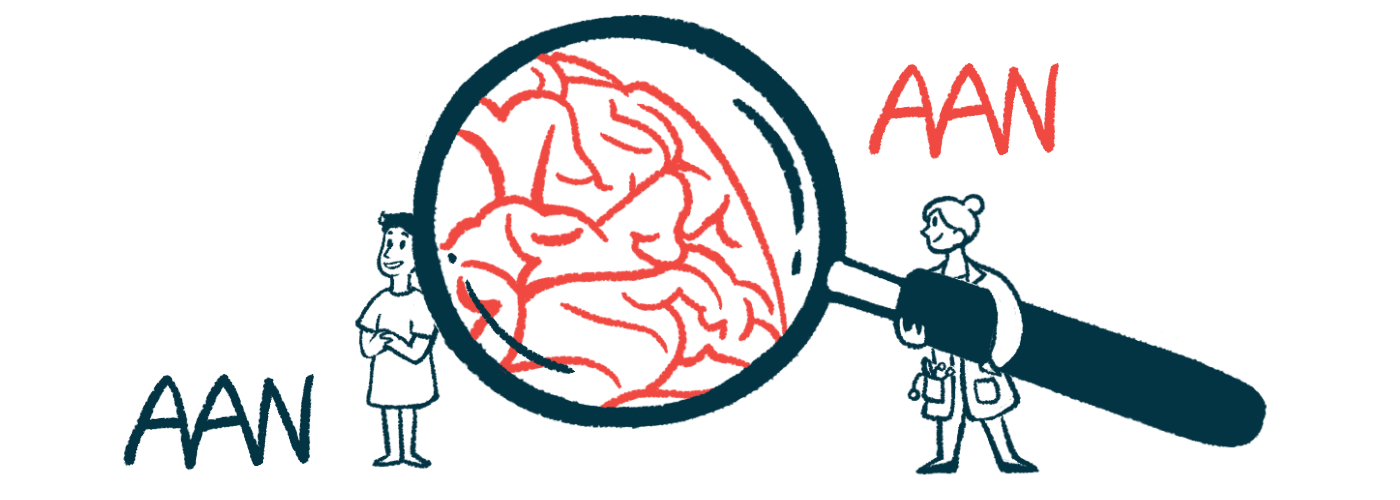AAN 2024: Subcutaneous Ocrevus led to nearly no relapses after year
Most patients remain free of relapses, new brain lesions in OCARINA II study

A subcutaneous (under-the-skin) formulation of Ocrevus (ocrelizumab) helped most adults with multiple sclerosis (MS) remain free of clinical relapses and new or worsening brain lesions, according to one-year data from the Phase 3 OCARINA II study.
Given twice a year as a 10-minute injection, this formulation of Ocrevus appears to deliver the same clinical benefit as the 2-4 hour-long infusions already approved for adults with relapsing or progressive forms of MS, but in a more convenient setup.
These data “underline the potential benefits of subcutaneous Ocrevus for patients with both relapsing and progressive forms of MS,” Scott Newsome, MD, a professor at the Johns Hopkins University School of Medicine in Baltimore, said in a press release.
Newsome, who has served as scientific advisor for Genentech, the Roche subsidiary that markets Ocrevus, shared the data in an oral presentation at the recent American Academy of Neurology (AAN) 2024 Annual Meeting, in Denver, Colorado, and online.
His presentation was titled “Subcutaneous Ocrelizumab in Patients With Multiple Sclerosis: Results of the Phase III OCARINA II Study.”
Regulatory decisions on subcutaneous Ocrevus anticipated later this year
Filings for approval of subcutaneous Ocrevus based on data from OCARINA II (NCT05232825) have been accepted and are currently under review in the U.S. and Europe. According to the company, a decision is anticipated in mid-2024 in Europe, and in September in the U.S.
“We look forward to continuing ongoing conversations with regulatory bodies worldwide to potentially bring an additional treatment option to more people living with MS,” said Levi Garraway, MD, PhD, Genentech’s chief medical officer and head of global product development.
Ocrevus works by blocking a protein called CD20 on the surface of B-cells, a type of immune cell implicated in the inflammatory attacks that drive MS. By blocking CD20, Ocrevus reduces the number of circulating B-cells, thereby easing disease activity and delaying disability progression.
After two initial doses given two weeks apart, the medication’s approved formulation is delivered every six months via an intravenous, or into-the-vein, infusion. Each infusion appointment may take up to six hours in total.
The new formulation contains ocrelizumab, the active ingredient in Ocrevus, plus a lab-made molecule called human hyaluronidase PH20 that increases the absorption of injectable therapies.
Subcutaneous formulation can be delivered to patients in as little as 10 minutes
It is delivered in as little as 10 minutes, which could offer more flexibility in how and where patients are treated, including in centers lacking equipment for intravenous infusion.
The Roche-sponsored OCARINA II study is comparing the safety, efficacy, and pharmacological properties of subcutaneous versus intravenous Ocrevus in 236 adults with primary progressive MS or relapsing forms of the disease.
Patients were randomly assigned to receive a 920 mg dose of the subcutaneous formulation or the approved 600 mg intravenous formulation that’s given in two infusions two weeks apart. They were then followed for 24 weeks, after which all patients received the subcutaneous formulation every six months up to 96 weeks (nearly two years).
After 12 weeks, results showed the total exposure to ocrelizumab was 29% higher with the subcutaneous formulation, although both reached similar peak concentrations in the blood.
Six-month efficacy data presented last year showed most patients experienced rapid B-cell depletion within the first two weeks of treatment and remained free from relapses and MRI activity.
Results sustained for 48 weeks in nearly all patients on either formulation
These results were sustained after 48 weeks, or nearly one year, where 97.2% of patients given the subcutaneous formulation and 98.1% of those initially given intravenous Ocrevus were still free of relapses, according to Newsome’s AAN presentation.
Over this period, two patients in each group experienced one relapse, and one patient in the subcutaneous group experienced two relapses, amounting to a relapse rate of 0.04 relapses per year in the subcutaneous group and 0.02 in the group that switched from the intravenous formulation.
Subcutaneous Ocrevus also continued to suppress brain lesions on MRI scans, with the majority of patients having no inflammatory lesions or new or enlarging lesions at week 48.
“Patients treated with subcutaneous Ocrevus experienced appropriate B-cell suppression and impressive near-complete suppression of new inflammatory disease activity,” Newsome said.
“These results demonstrate the potential of subcutaneous Ocrevus as a treatment option that can be matched to the individual needs of people with MS and healthcare professionals,” he added.
92.3% of patients satisfied or very satisfied with subcutaneous Ocrevus
The majority (92.3%) of patients were satisfied or very satisfied with subcutaneous Ocrevus. Most also felt the formulation was convenient or very convenient to use (90.1%) and that the time taken to get the injection was just right (90.5%).
Most side effects reported with subcutaneous Ocrevus were mild or moderate and consistent with those of the intravenous formulation. “Both were well tolerated,” the researchers wrote in the presentation’s abstract. None of the patients developed antibodies against the recombinant human hyaluronidase.
“With a full year of data demonstrating near-complete suppression of relapse activity and minimal progression of lesion development, this 10-minute subcutaneous Ocrevus injection shows results that are consistent with the long-established benefits of intravenous Ocrevus,” Garraway said.
Note: The Multiple Sclerosis News Today team is providing coverage of the American Academy of Neurology (AAN) 2024 Annual Meeting April 13-18. Go here to see the latest stories from the conference.










